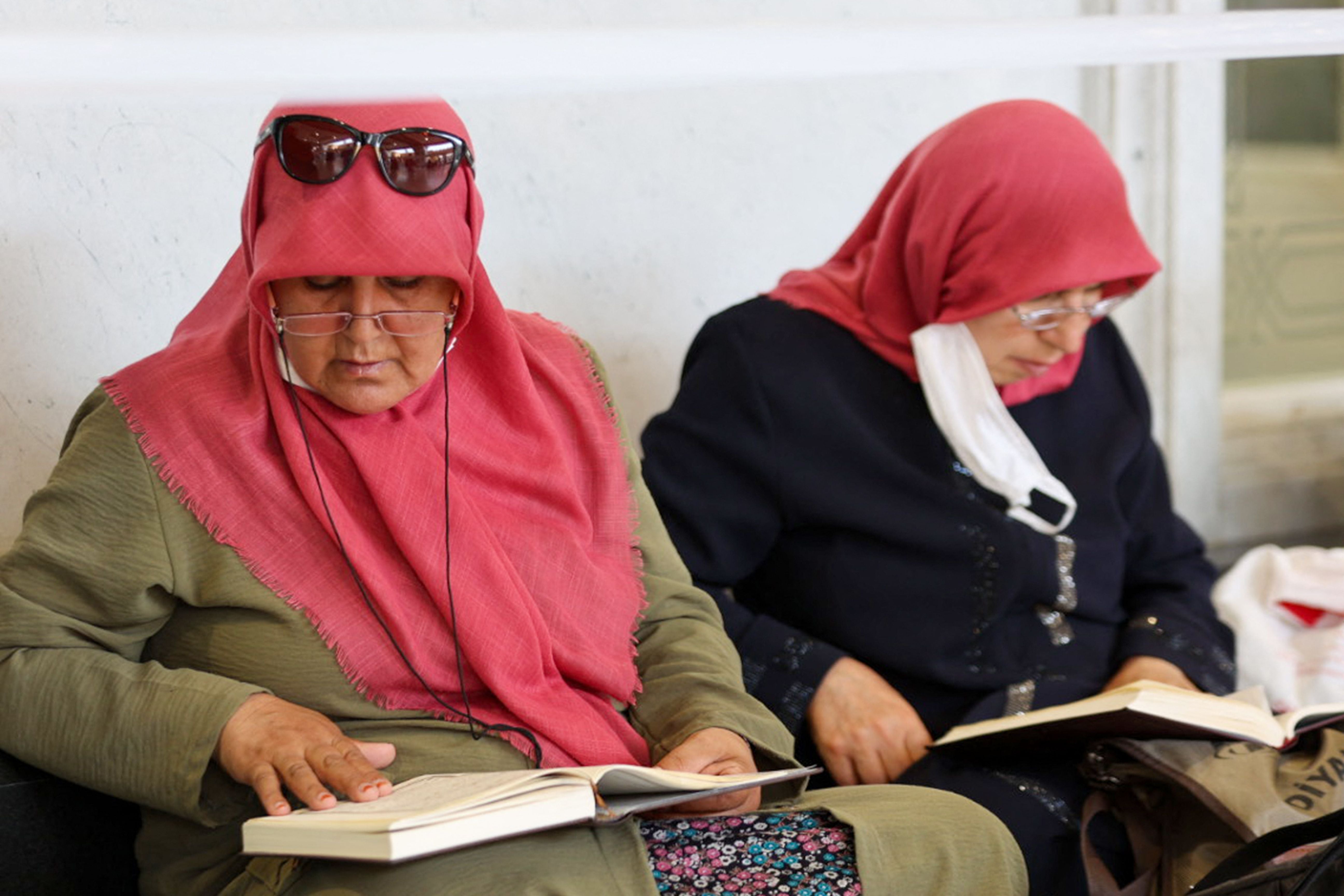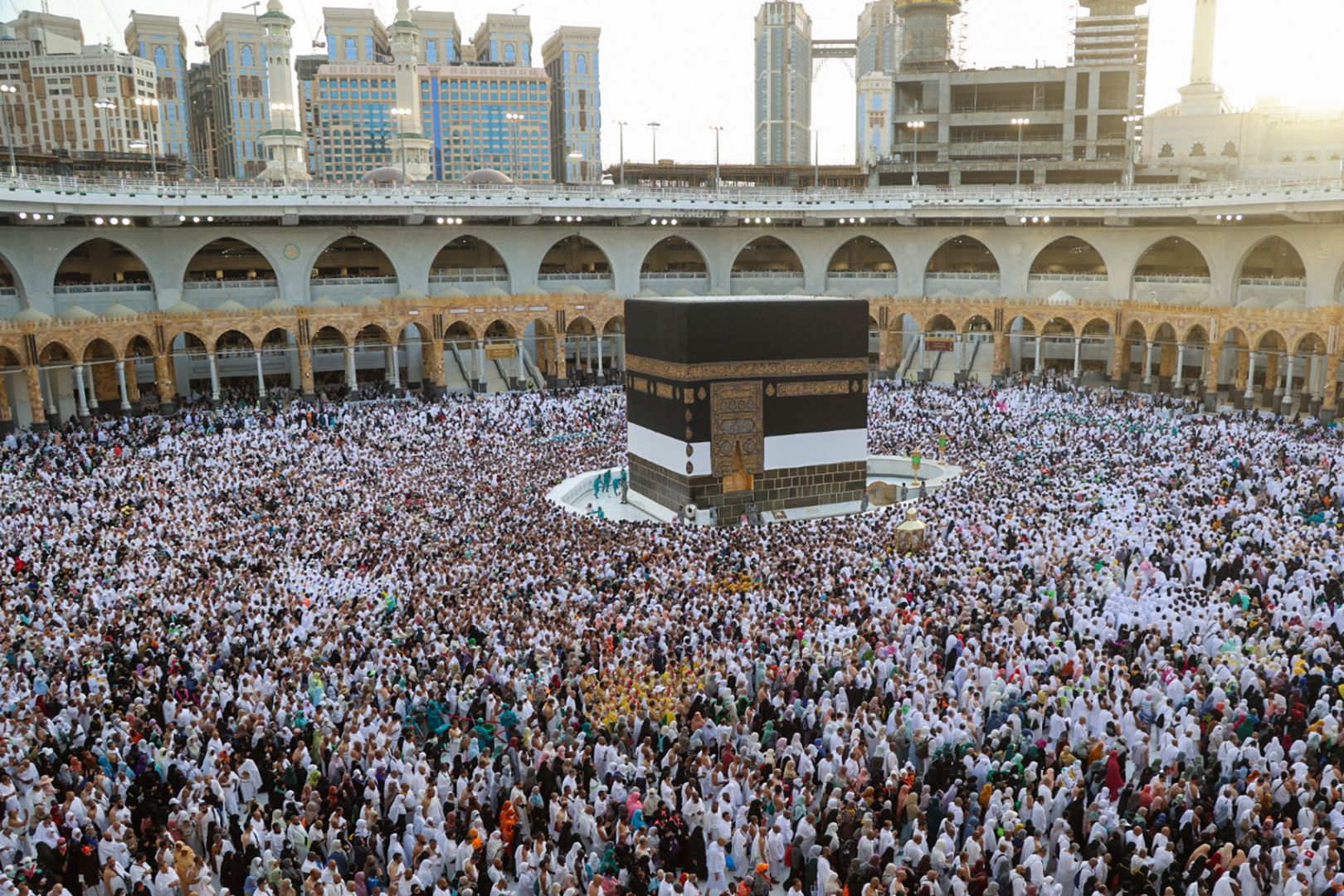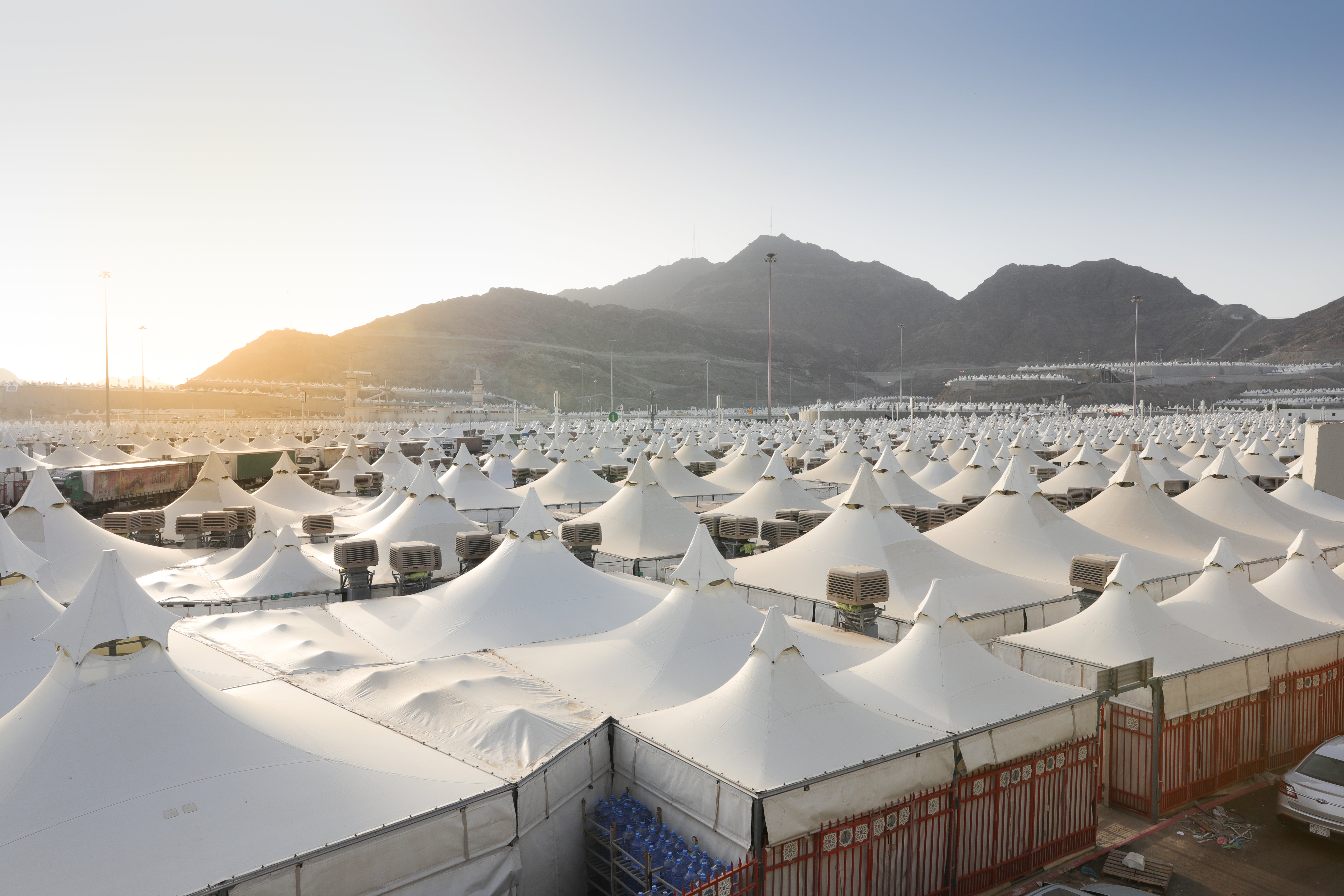What is Hajj and why do Muslims go to Makkah?
Muslims from around the world descend upon Makkah for the annual Hajj pilgrimage- here’s all you need to know

One million Muslims are about to embark on the most important religious event in the Islamic calender, as hundreds of thousands of global worshippers arrive in Saudi Arabia for Hajj.
Hajj is one of the five pillars in Islam. It is an obligation upon every physically and financially able Muslim to perform once in their lifetime.
The pilgrimage is an opportunity for Muslims to renew their faith, develop a closer relationship to God and seek forgiveness for their sins.
Muslims from around the world descend upon Makkah, where lies the majestic Holy Kaaba, inside the city’s central mosque, Masjid al-Haram.
This is the first year since the pandemic began in 2020 that international pilgrims are allowed inside Makkah to perform the sacred pilgrimage.

When arriving for the pilgrimage, men must wear two pieces of white cloth called the ihraam, while women wear clothes that cover the length of their body and a hijab which covers their hair.
The simplicity of clothing symbolises the equality of all people before God, as well as a state of purity before embarking on the spiritual journey.
Muslims first perform the tawaf, which is when they walk around the black Kaaba clockwise seven times.
They then walk or run seven times between the two hills of Safa and Marwa to honour the struggle of the wife of Prophet Ibrahim, Hajar, who ran between the hills seven times in search of water for her son, Ismail.
The two acts together are known as Umrah - a lesser pilgrimage which Muslims can perform throughout the year in Makkah.
After this first stage of Hajj is completed, pilgrims go to Mina, a tent city roughly eight kilometres from Makkah.

Here, they spend the night in worship before one of the most important days in the Hajj calender, the Day of Arafat.
Pilgrims flock to Mount Arafat, where the Prophet Muhammad gave his last sermon. They pray for forgiveness and recite the Quran while standing on the mount.
After Arafat, they go to Muzdalifa which is an area of open plains near Makkah where they spend the night.
On the third day, the pilgrims are back in Mina for a ritual known as the stoning of the devil. They throw pebbles at three structures that mark the spot Prophet Ibrahim was tempted by Satan.
This is followed by the sacrifice of lamb whose meats are distributed to the poor, marking the day first day of Eid.
Around the world, Muslims celebrate the holy festival with special prayers at the mosque, followed by meeting food, family and friends. This year, Eid will fall on 9 July.
On the last days of Hajj, pilgrims return to Makkah to perform one more tawaf around the Kaaba and walk between the hills of Safa and Marwa, and also return to stone the three structures.
Join our commenting forum
Join thought-provoking conversations, follow other Independent readers and see their replies
Comments


Bookmark popover
Removed from bookmarks